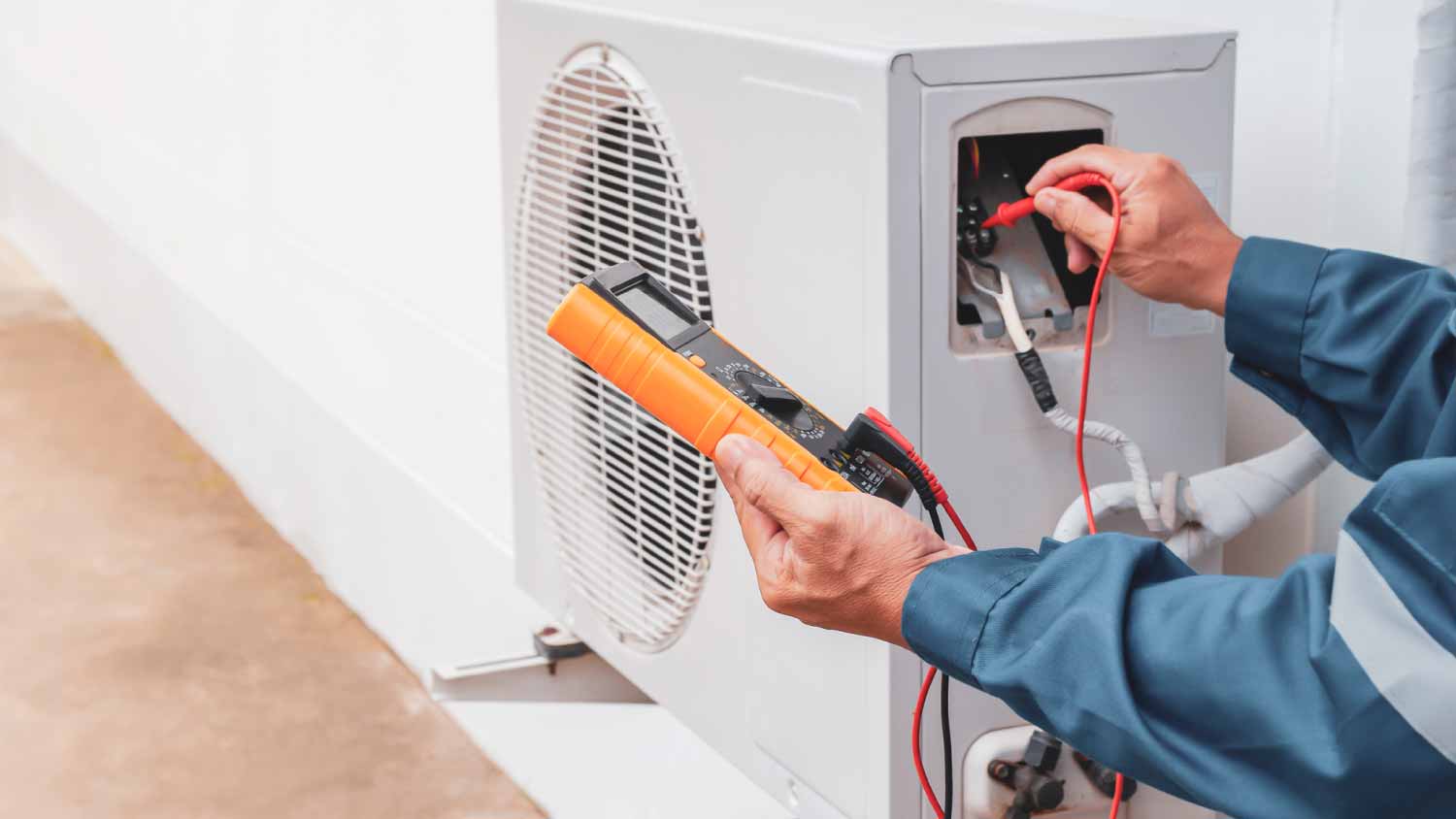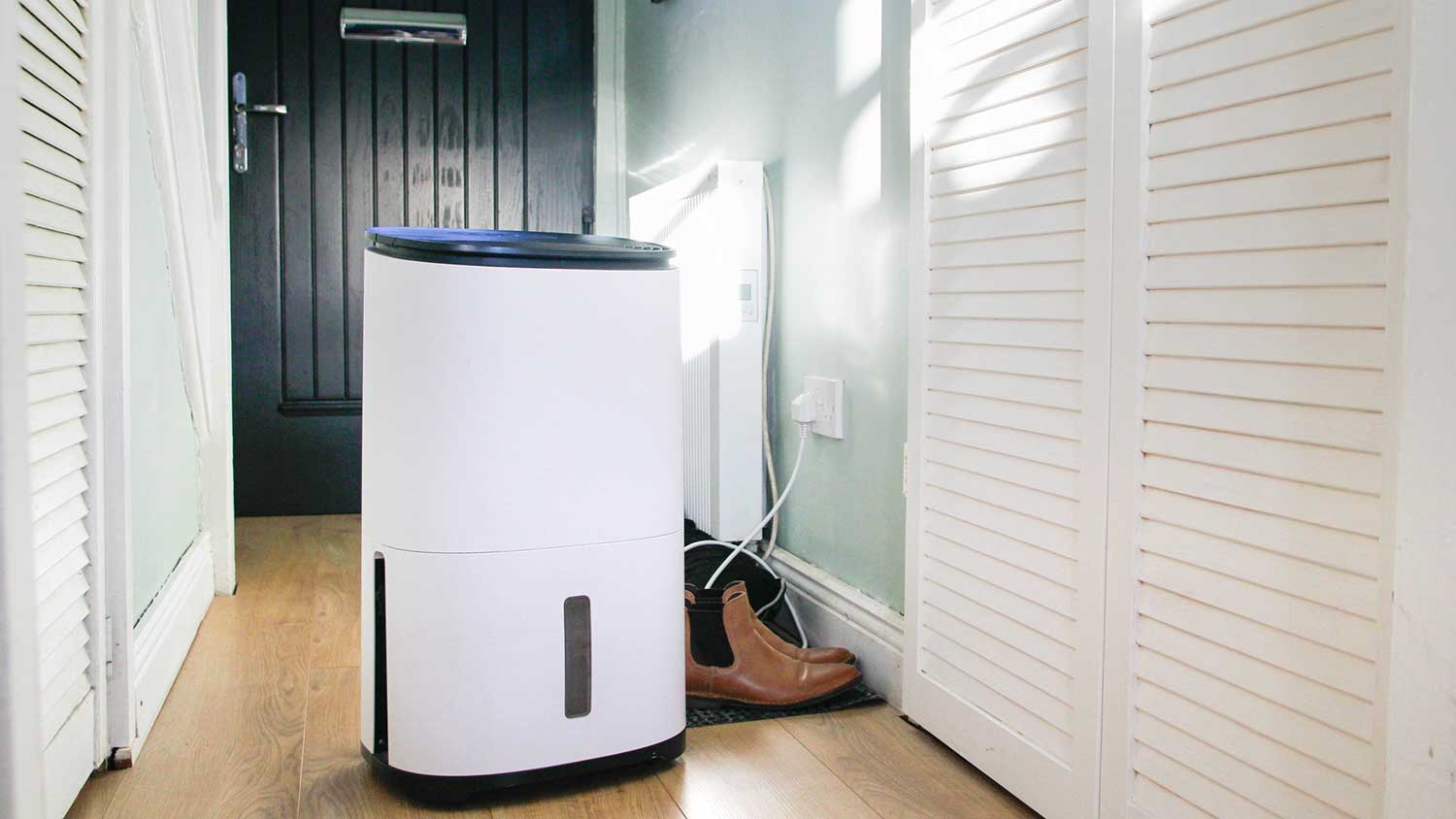DIY Duct Leakage Test: How to Check Your HVAC System for Leaks
An energy-efficient home starts with healthy ductwork


Your HVAC system’s health is essential for maintaining a comfortable and energy-efficient indoor environment. However, if your ductwork has leaks, it can lead to a significant loss of conditioned air, resulting in higher energy bills and an uncomfortable home. One effective way to identify and address duct leaks is by performing a DIY duct leakage test. Let’s talk about the benefits of this test, the steps to complete it, and some insights into why it's crucial for an energy-efficient HVAC system.
How to Perform a DIY Duct Leakage Test
Performing a DIY duct leakage test involves a few straightforward steps and minimal equipment. Here's a step-by-step guide to help you get started:
Step 1: Gather the Necessary Supplies
You'll need the following items to conduct the test:
Painter's tape or duct tape
Plastic sheeting
A piece of string or twine
Incense sticks or smoke pencils
Step 2: Seal Off Registers and Vents
Begin by closing all the windows and doors in your home. Then, use painter's or duct tape to seal off all registers and vents except for one. Choose a vent near the center of your living space for the test.
Step 3: Create a Pressure Differential
To create a pressure differential, you'll need to block off the open vent with plastic sheeting and secure it with tape. Leave a small opening at the bottom to insert the incense stick or smoke pencil.
Step 4: Conduct the Test
Light the incense stick or smoke pencil and carefully hold it near the opening in the plastic sheeting. If you observe the smoke being drawn into the duct, it indicates that air is being pulled from your home into the duct, suggesting a leak.
Step 5: Inspect Ductwork
Use the smoke to inspect your ductwork for leaks. Pay close attention to joints, seams, and connections. If you notice any smoke being drawn into these areas, mark them for repair.
Step 6: Seal Leaks
Once you've identified the leaks, seal them using duct mastic or foil tape designed for HVAC applications. Ensure that the sealant is applied securely and covers the entire leak area.
Step 7: Re-test
After sealing the identified leaks, repeat the smoke test to verify that the ducts are now airtight. You've successfully addressed the leaks if no smoke is drawn into the duct.
Why Perform a DIY Duct Leakage Test?
Performing a DIY duct leakage test serves several vital purposes. First and foremost, it helps you identify and locate leaks in your home's ductwork. Here are some compelling reasons to consider conducting this test:
Ensures Energy Efficiency
Leaking ducts can cause your HVAC system to work harder, leading to increased energy consumption and higher utility bills. By identifying and sealing these leaks, you can have the most efficient ductwork possible, saving you money in the long run.
Improved Comfort
Duct leaks can result in uneven heating or cooling throughout your home, making certain rooms too hot or cold. You can have more consistent and comfortable indoor temperatures by addressing these leaks.
Better Indoor Air Quality
When air ducts leak, they allow moisture, mold, dust, allergens, and pollutants to enter your duct system, potentially contaminating the air you breathe. Detecting and sealing these leaks can help improve indoor air quality and reduce health risks.
Environmental Impact
Air ducts in good condition result in less energy used in your home. Reducing energy consumption saves you money and reduces your carbon footprint. You can have a more sustainable and eco-friendly home by fixing duct leaks.
Prolonged HVAC Lifespan
Energy leaking through ducts means your HVAC system must work harder to keep your home at the desired temperature. When ducts are repaired and sealed, your HVAC system operates more efficiently, and it experiences less wear and tear. This potentially extends the system’s lifespan and reduces HVAC repair costs.
Signs You May Have Leaking Ducts
Before jumping into the DIY duct leakage test, it's essential to be aware of potential signs that indicate leaking ducts. Keep an eye out for the following indicators:
High energy bills: A sudden increase in your energy bills without an obvious explanation could be due to leaking ducts, as your HVAC system works harder to compensate for lost air.
Inconsistent temperatures: If certain rooms in your home are significantly hotter or colder than others, it may be a sign of duct leaks that affect air distribution.
Visible damage: Inspect your ductwork for visible signs of damage, such as disconnected joints, holes, or loose insulation.
Dusty or dirty vents: If you notice excessive dust or dirt around your vents, it could be a sign that unfiltered air is entering through duct leaks.
Whistling or hissing noises: Listen for unusual sounds from your ducts when your HVAC system runs. Whistling or hissing noises could indicate air escaping from leaks.
If you observe any of these signs, it's a good idea to proceed with a DIY duct leakage test to confirm the presence of leaks.
How to Prevent Duct Leaks

Preventing issues like leaks in the first place is the best approach to maintaining an efficient HVAC system. Here are some tips to help you prevent duct leaks:
Regular maintenance: Schedule regular HVAC maintenance to detect and address potential issues before they become significant problems.
Proper insulation: Ensure your ducts are adequately insulated to prevent temperature fluctuations and condensation that can lead to leaks.
Seal ducts during installation: If you're installing new ducts, make sure your ductwork is properly sealed from the beginning.
Use quality materials: When sealing ducts or making repairs, use high-quality sealants and materials designed for HVAC applications.
Keep ducts clean: Dust and debris can accumulate in your ducts, potentially causing leaks. Keep your ducts clean by regularly changing filters and cleaning them professionally when needed.
How Much Does a Professional Duct Leakage Test Cost?
Before diving into the DIY approach, you might wonder about the cost of hiring a professional for a duct leakage test. While the price can vary depending on factors such as your location and the size of your home, a professional duct leakage test costs anywhere between $250 and $400.
Professional tests involve specialized equipment, such as a blower door, which pressurizes the duct system to detect leaks accurately. While these tests are thorough and can pinpoint leaks precisely, they can be relatively costly.
If you're looking for a more budget-friendly option, performing a DIY duct leakage test can be a viable alternative.
DIY vs. Hiring a Pro for a Duct Leakage Test
When deciding between a DIY duct leakage test and hiring a professional, consider your situation. DIY tests are budget-friendly and suitable for basic assessments in smaller homes. Professionals, however, use specialized equipment for precise results, making them ideal for larger homes or complex HVAC systems. Starting with a DIY test is a cost-effective option, but for comprehensive evaluations or significant leakage issues, enlisting the help of a local duct installer is recommended.
Frequently Asked Questions
A DIY duct leakage test should be part of your annual home maintenance routine. Conducting this test annually allows you to identify and promptly address new leaks. Regular testing helps maintain the efficiency of your HVAC system, reduce energy costs, and ensure a healthier indoor environment by preventing leaks from going undetected for extended periods.
Yes, it is essential to seal all duct leaks. Even small leaks in your ductwork can lead to energy waste, reduced efficiency, and decreased comfort in your home. Sealing all leaks, whether minor or significant, ensures that your HVAC system operates at its best, delivering conditioned air where needed without losses. This comprehensive approach to duct sealing is crucial for maximizing energy efficiency and maintaining a comfortable indoor environment.
You can use Flex Seal to seal the ductwork in your home. Flex Seal is designed to protect ducts against leaks and corrosion and keep them from degrading. A coat of Flex Seal can stop leaks and last for the lifetime of your ducts. The material can also handle extreme temperatures and humidity.
Experts agree that ducts can last anywhere from 10 to 25 years, with an average lifespan of around 15 years. Regular maintenance—such as changing your HVAC filters, yearly professional inspections, and repairing leaks—can extend the longevity of your system and improve air quality. If you start seeing a lot of damage to your ducts, noticing excessive dust in your vents, hearing strange noises when your system runs, or seeing a major increase in your energy bills, it may be time to replace your ducts.





- Furnace Repair
- Air Conditioning Repair
- HVAC Repairs
- Furnace Installation
- Wood & Pellet Stove Repair
- Dehumidifier & Humidifier Repair
- Heat Pump Companies
- Swamp Cooler Repair
- Wood Stove Services
- HVAC Companies
- Commercial A/C Repair
- Geothermal Installation
- Air Conditioning Installation
- Boiler Repair
- 24 Hour Furnace Repair
- Geothermal Repair
- Heat Pump Repair
- Humidifier Installation
- Thermostat Repair
- Thermostat Installation
- Nest Installation
- Heating & Cooling
- Heating Repair
- Furnace Cleaning
- Furnace Tune-Up
- HVAC Technicians
- Subcontractors
- Furnace Maintenance
- Plumbing & Heating Companies
- Wood Stove Inspection
- Mini Split Installation
- Wall Heater Repair
- Duct Installers
- Who Cleans Air Ducts? Learn Who to Hire
- Understanding Common Duct Sizes for Your Home’s HVAC System
- 8 Types of Duct Joints and When to Use Them
- Is Duct Cleaning Worth It? Here’s Why the Answer Is Yes
- DIY Air Duct Cleaning Tools and How to Use Them
- When Is Insulation Required on Air Ducts? What You Need to Know
- Condensation on Ductwork: Causes and Potential Solutions
- Does Air Duct Cleaning Help With Smells?
- How Long Does Air Duct Cleaning Take? 4 Factors That Impact the Time Frame
- 9 Ways to Balance Duct Airflow










